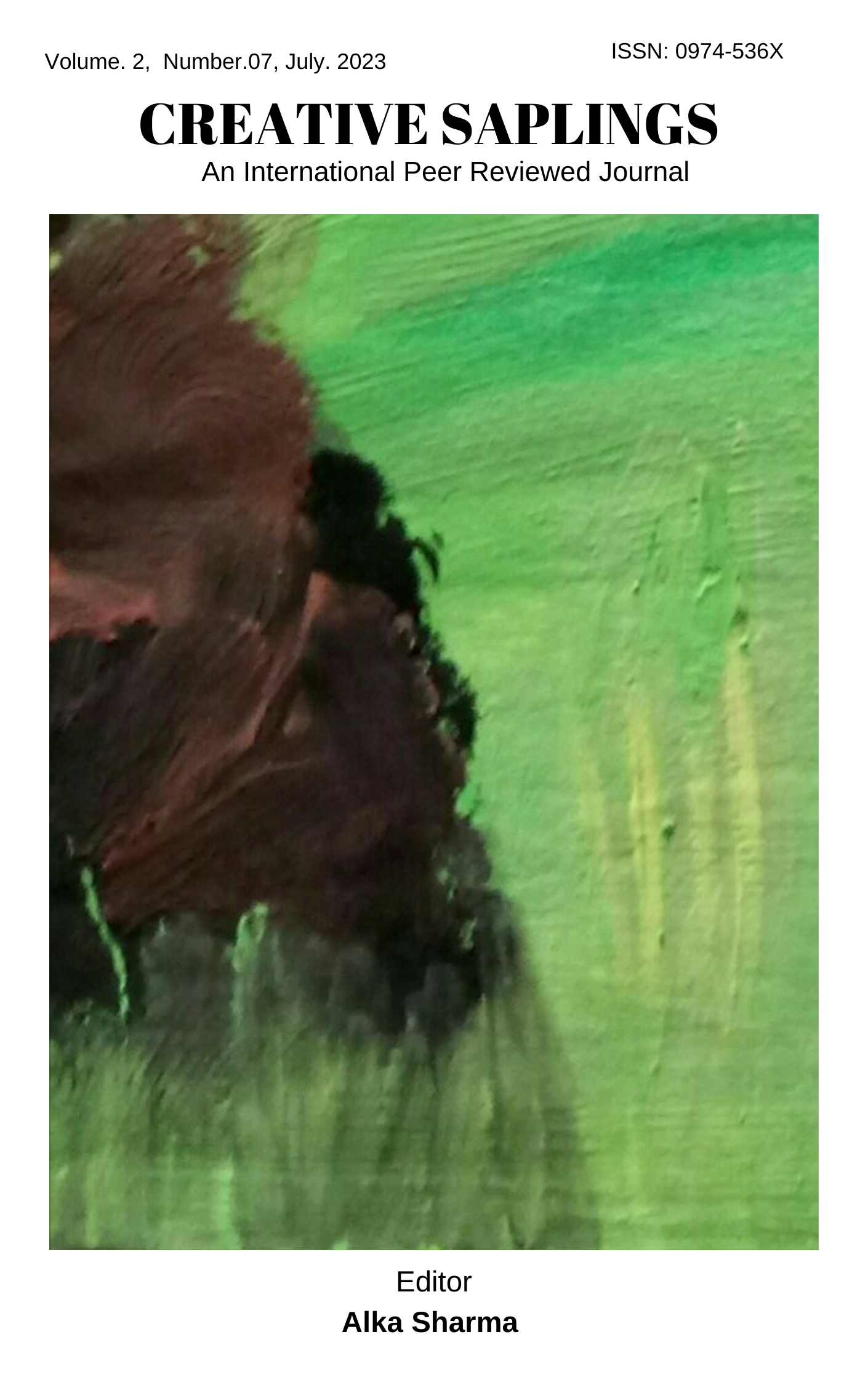Enunciating Transition in Indian Civilization: An Analysis of Disability in Ancient Indian Texts
DOI:
https://doi.org/10.56062/gtrs.2023.2.04.337Keywords:
Disability Narratives; Cultural Transmission; Indianness; Inclusion; Ancient Indian Texts; Capability Theory.Abstract
This paper attempts to re-evaluate and reconsider the portrayal of disability by analysing the philosophy of inclusivity in ancient Indian culture through a close reading of the Ancient Indian Texts. Although it is preordained that disability has been regarded as a sin or an outlaw in Indian society, from a vigilant standpoint, it appears to be incomprehensible. This is more of a socio-temporal change that resulted from colonialism. The epics like the Mahabharata, Ramayana, and Rig Veda have given space and strength to various disabled personalities, demonstrating the specifics that represent a narrative change in the contemporary era. The themes of unity in diversity, cooperation, friendship, harmony, and power show that disabled characters have played a critical role in their unrivalled capability. The attitude of cooperation during hard times has been inbuilt in Indians, which is depicted through multiculturism. Ultimately, the positive behaviour of society can be accentuated by a proper understanding of the epics and Vedas, which will help curb the stigma around disability.
References
“ICF Case Studies - Introduction to the ICF.” Www.icf-Casestudies.org, www.icf-casestudies.org/introduction/introduction-to-the-icf.
Bose, Buddhadeva. The Book of Yudhisthir. Orient Blackswan, 1986, p. 11.
Chander, Brahma Kumar Jagdish. True Essence of Mahabharat and Gita. Om Shanti Press.
Chandra, Roy Pratap. The Mahabharata of Krishna-Dwaipayana Vyasa. Translated into English Prose from the Original Sanskrit Text. Oriental Publishing Company, 1962.
Dalal, Ajit K. The Mins Matters: Disability Attitudes and Community Based Rehabilitation Centre of Advanced Study, Department of Psychology, University of Allahabad, 2000.
Kiefer, Thomas Joseph. “Reason and Normative Embodiment in Plato’s Republic: On the
Philosophical Creation of Disability.” Disability Studies Quarterly, vol. 34, no. 1, Jan. 2014, https://doi.org/10.18061/dsq.v34i1.3319.
Kumari, Neha. “Karmic Philosophy and the Model of Disability in Ancient India.” Shanlax International Journal of Arts, Science and Humanities, vol. 7, no. 1, July 2019, pp. 39–43, https://doi.org/10.34293/sijash.v7i1.531. Accessed 13 Mar. 2020.
Mani, Rama D. The Physically Handicapped in India. South Asia Books, 1988, pp. 1–2.
Mohsini, S. R., and Praveen Kumar Gandhi. The Physically Handicapped and the Government. Delhi : Seema Publications ; New Delhi : Sole distributors, Light and Life, 1982, pp. 1–2.
Nair, Sandhya B. “Icons of Women hood: Insights into the Legendry Characters Kunti and Gandhari from the Mahabharata.” Journal of Emerging Technologies and Innovative Research, vol 9, no.7, July 2022. www.jetir.org. Accessed on 20 June, 2023.
Nair, Shantha N. Echoes of Ancient Indian Wisdom. Pustak Mahal, 2008.
Neelakantan, A. Ajaya: Book I, Roll of the Dice. Leadstart Publishing Pvt Ltd., 2013.
Neelakantan, Anand. Ajaya : Rise of Kali. Leadstart Publishing Pvt Ltd. , 2015.
Obama, Barack. A Promised Land. Crown Publishing Group, 2020.
P. Gokila, and M. Saranya. “A Study on Mahabharat’s Vile Villain Shakuni in Mallar Chatterjee’s Shakuni and the Dice of Doom.” International Journal for Multidisciplinary Research, vol. 5, no. 2, International Journal for Multidisciplinary Research (IJFMR), Apr. 2023.
Palmer, M., and D. Harley. “Models and Measurement in Disability: An International Review.” Health Policy and Planning, vol. 27, no. 5, July 2012, p. 358, https://doi.org/10.1093/heapol/czr047.
Pandey, R. S., and Lal Advani. Perspectives in Disability and Rehabilitation. Vikas Publishing
House, 1995, p. 69.
Pattanaik, Devdutt. Jaya : An Illustrated Retelling of the Mahabharata. Penguin Books, 2010.
Perrett, Roy W. “History, Time, and Knowledge in Ancient India.” History and Theory, vol.
, no. 3, Oct. 1999, pp. 307–21, https://doi.org/10.1111/0018-2656.00094. Accessed 6 Sept. 2021.
Sen, A.K. “On the foundations of welfare economics: utility, capability and practical reason.” Ethics, Rationality and Economic Behaviour. Edited by F. Farina, et, al., Clarendon Press, 1996, pp. 50–65.
Sen, A.K. Inequality Reexamined. Harvard UP, 1992, p.40.
Thurer, Shari. Disability and Monstrosity. Rehabilitation Literature, 1980.
www.wisdomlib.org. “Section XLVII [Mahabharata, English].” Www.wisdomlib.org, 26 Feb. 2012,www.wisdomlib.org/hinduism/book/the-mahabharata-mohan/d/doc6191.html. Accessed 22 June 2023.
Downloads
Published
Issue
Section
License

This work is licensed under a Creative Commons Attribution-NonCommercial-NoDerivatives 4.0 International License.
This work is licensed under a Creative Commons Attribution-NonCommercial 4.0 International License.















